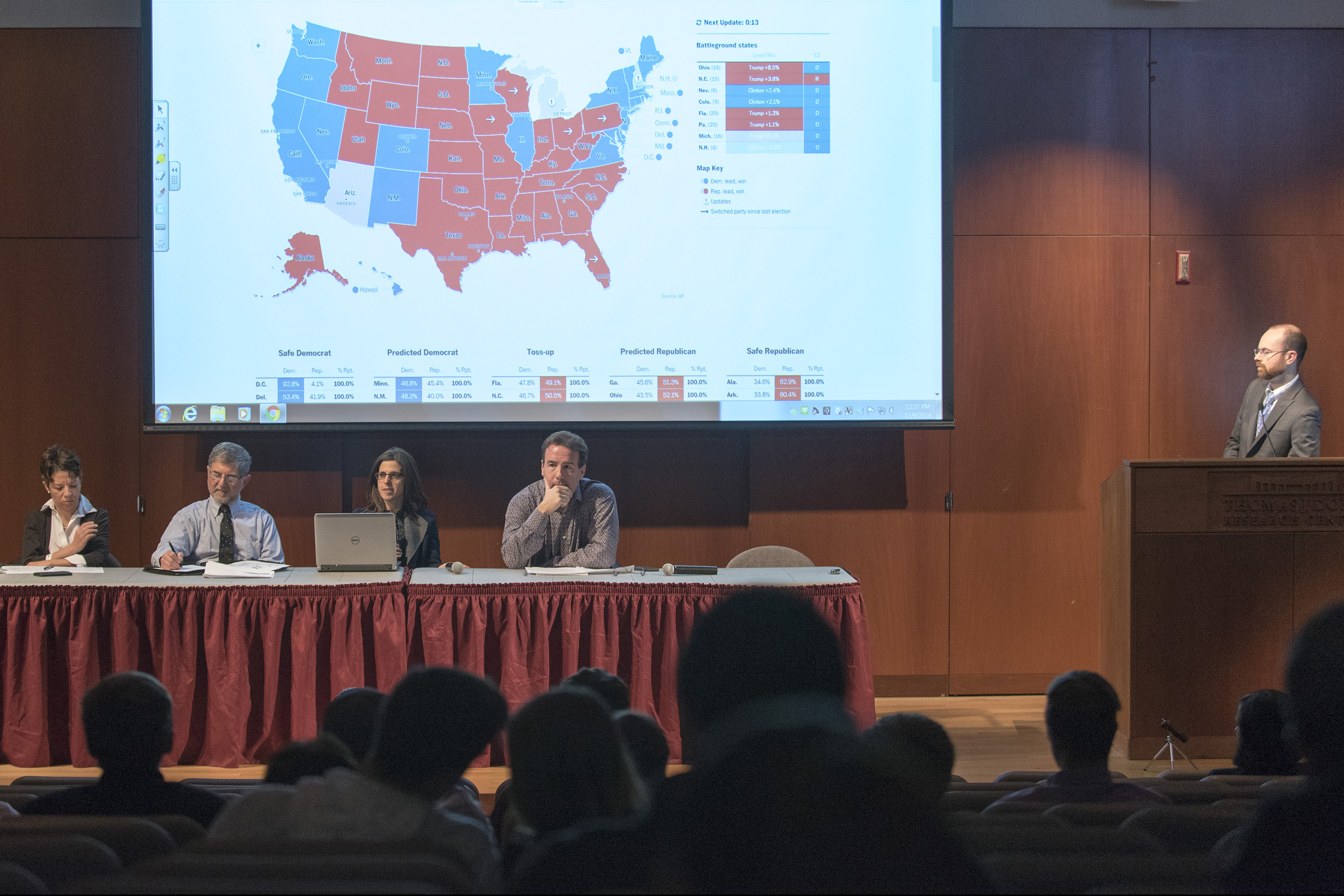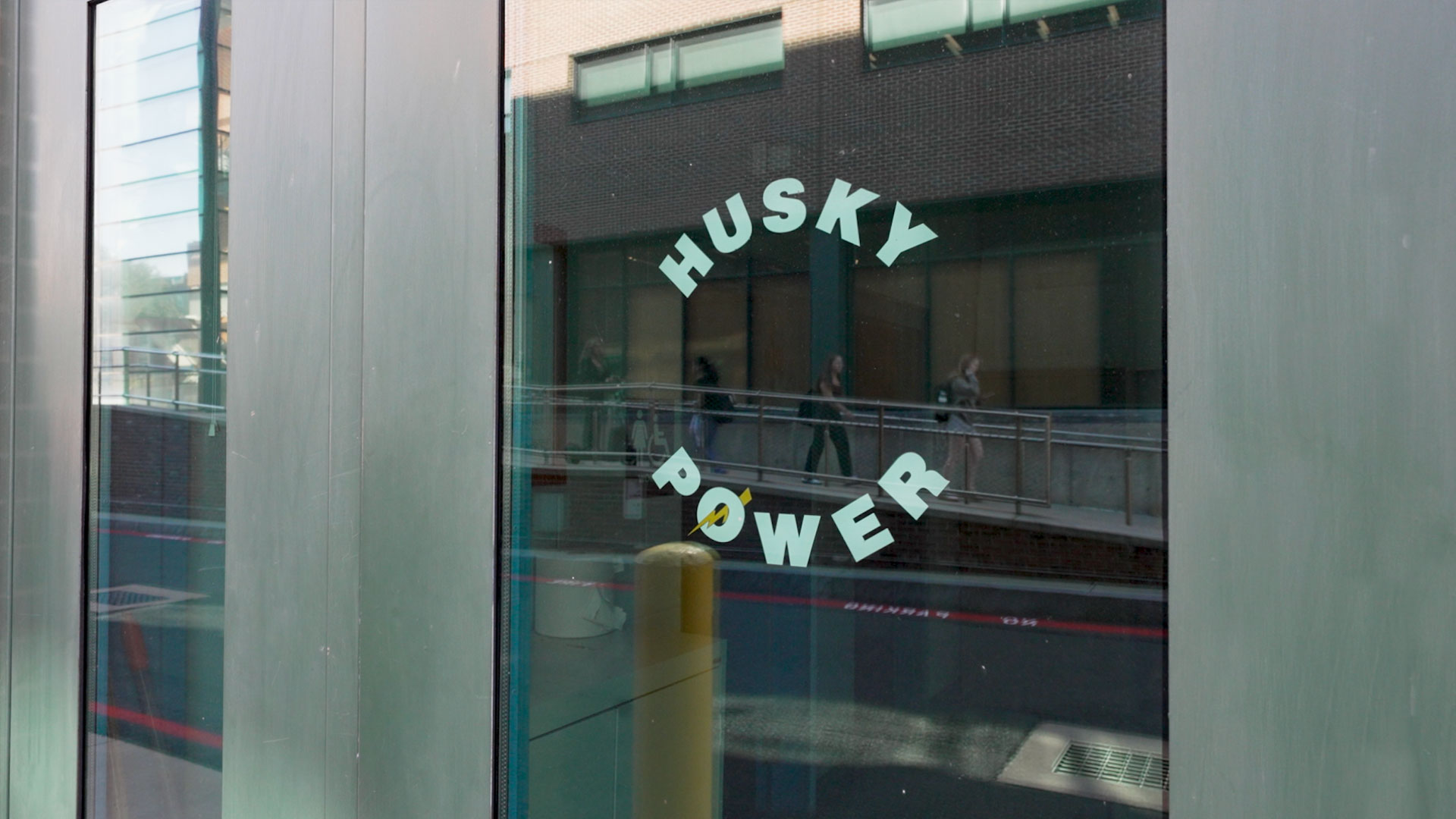Breakdowns in polling accuracy due to their design and the influence of technology were among the factors that turned what polls indicated would be a victory into a loss for the former Secretary of State and U.S. senator in the 2016 U.S. Presidential election, say UConn experts.

The day after the election, UConn political science and public policy faculty analyzed Donald Trump’s victory over Hillary Clinton during a forum at the Thomas J. Dodd Center for Research.
Panelist Samuel Best, professor of political science, who studies public opinion and political behavior, said variations in how polls are developed, such as taking into account how voters behaved in the last election cycle, appear to have had a greater effect on accuracy in this election.
“Framing your likely voter based on the 2012 election cycle could be pretty problematic,” said Best, noting that most Trump voters did not vote in the last election cycle.
Another factor affecting polls is the disappearance of landline telephones, which used to provide accurate information on where voters lived and would cast their votes. Most such telephones have been replaced by mobile phones with exchanges or area codes that could reflect owners’ previous voting districts. “Cell phones have produced enormous challenges in determining geography and location,” Best said.
There were a number of polls looking at the popular vote that had it within the margin, noted Jennifer Dineen, program director in the Graduate Program in Survey Research in the Department of Public Policy, and one of the panelists. Those had Clinton up by two points in the popular vote, in which the outcome looks closer to about point seven. But there were also states like Wisconsin and Michigan in which polls were way off, and those states were critical to the election outcome, she added.
“Polls did not have a good night, but they all were not all as wrong as will be discussed,” said Dineen. “Polling is an estimate, it’s an interval.”
In addition to Dineen and Best, panelists included Paul Herrnson, professor of political science who teaches courses on Congressional elections and other aspects of American politics; and Evelyn Simien, associate professor of political science and a specialist in African American politics, public opinion, and political behavior. Thomas Hayes, an assistant professor of political science who specializes in the fields of American politics and political behavior, served as moderator.
They noted additional factors influencing voter behavior this election, notably miscalculations in racial and gender politics and in the depth of support for the candidates:
• Exit polls found that most voters knew who they would support going into the final weeks of the campaign.
• Half of voters said they were not bothered by Trump’s comments about Latinos, women, immigrants, and other candidates.
• Trump’s use of “symbolic language,” such as using nicknames to describe his campaign opponents – “Corrupt Hillary,” “Lying Ted (Cruz),” and “Little Marco (Rubio)” – helped undermine their important appeal to voters.
• Latino voters did not support Clinton as well as they did President Barack Obama in the 2012 election campaign.
• Despite being the first woman to be a party’s major candidate for President, Clinton did not energize the electorate as Obama did as the first African-American major party candidate.
Simien said political scientists have not fully considered race, gender, class, and age as variables that ultimately dictate the outcome of elections in the United States. She noted that in the run-up to the election the media reported on Trump’s harsh rhetoric.
“Post-election, there is some radio silence because of this unexpected outcome,” she said. “What gets lost in the conversation is the role that gender played. Instead we focus on his economic message as it’s appealing to white, blue color, working-class Americans. You cannot divorce that demographic and their racial attitude and their gender attitude from their voting behavior. Post-election, some political scientists – not enough, far too few – will study those attitudes. Did gender or attitudes toward race influence voting behavior and determine this electoral outcome?”
Best said Clinton’s favorability ratings from her time as Secretary of State in the Obama Administration slipped steadily over the past four years, raising the question of whether the nation is ready for a female commander in chief.
Clinton had a nearly 60 percent favorability rating a year after the 2012 attacks against two U.S. government facilities in Benghazi, Libya, according to Best. But, after she announced her candidacy for the White House, her rating soon dropped 12 points, during a time when she was nearly unopposed by other candidates.
“How come they’re dropping before Donald Trump, Bernie Sanders, or anyone is making any comments whatsoever?” Best asked. “I think it speaks to how uncomfortable we are about a woman running for president. We can see that in the exit polls as well.”
As to the challenges facing the president-elect, Herrnson said Trump will need to build unity among Republicans in office, including those he battled during the primary campaign and party leaders who may have kept their distance during the campaign, as well as trying to reach across the aisle to Democrats.
“I think he might find a receptive audience for some things among Democrats recently elected or those in the Senate who are up for election in the next cycle,” Herrnson said. “It will be an interesting situation in the upcoming Congress. Besides realignment, there will be pressure to change the [presidential] nomination rules, but many of the issues Democrats have championed won’t get very far and, of course, with Supreme Court nominations, we’ll see more conservative justices.”



